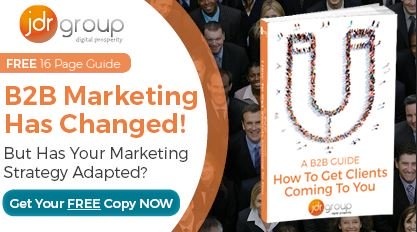New Generation Marketing Strategies vs Old School Marketing Strategies

What are new generation marketing strategies, and how do they compare to ‘old school’ techniques? Over the past few years, noticeable trends have caused changes to how businesses market themselves – to the extent that some old school strategies are no longer as effective, and can even be counter-productive.
Several social and technological changes have driven these trends, including the rise of smartphones and mobile devices, and the wide-scale adoption of social media for business use. These have led to changes in buyer behaviour and the way businesses spend their budgets. How do you ensure your business stays up-to-date and uses these trends to its best advantage?
Mobile-Friendly Marketing
The rise of smartphones means it is now crucial for websites to offer a great user experience for mobile as well as desktop. Businesses now need to ensure their websites are mobile-friendly or face being penalised, resulting in lower rankings. This begins by coding your website so the layout is responsive to screen size. The design auto-adjusts so it looks good on any device, from the largest iMac to the smallest iPhone.
Other considerations are also important. For example, your website should be lightweight enough to load quickly on smartphones using 4G/5G connections. This means optimising your images and hosting videos off-site (e.g. on YouTube), rather than on your site itself. While we’re on the subject of videos – place them so they scroll vertically. It irritates users to have to continually turn their phone to view widescreen videos. CTA buttons should also be more prominently placed on mobile websites, preferably at the top of the page, to prevent your prospect having to spend ages scrolling through the page to find ways to get in touch.
Informative & Varied Content
Because your target audience is likely to include several types of buyer, who will each need different information at different stages of their buyer journey, you’ll need a wide range of content. This should be informative, varied, and valuable, incorporating both written and visual material.
1. Time-Sensitive Content
Time-sensitive content includes news items, product launches, and special offers. The purpose is to encourage a spike of interest over a short time period – e.g. to drum up interest for an event or offer. Time-sensitive content doesn’t age well, so balance this with evergreen and gated content.
2. Evergreen Content
Evergreen content is designed to retain its relevance over a long period. Examples include geographic landing pages, infographics, service pages, ‘how to’ blog posts and videos, and ‘sticky’ social media content. Developing high-quality, varied evergreen content is essential for building organic traffic through SEO. Search engines love it because it always provides something of value – and it gives helpful information to your target audience. Create your evergreen content in a format that is easily shareable through social media, WhatsApp/SnapChat/Messenger, and email.
3. Gated Content
Gated content is exclusive material that users gain access to in exchange for contact data, or as part of an email campaign. Examples include downloadable e-books, video tutorials and multipart courses delivered by email. When used correctly, gated content is one of the most effective new generation marketing techniques. Not all downloadable content should be gated. Populate your resources page with plenty of free downloadable material to start with. This lets you gauge what is popular and makes it more likely that the prospect will sign up to receive gated content.
Getting To The Point
Do people have famously low attention spans online? Maybe. Estimates range from 30 seconds to as low as eight seconds for new content, meaning you don’t have much time to grab a customer’s attention. This short window is due to the sheer volume of content available online. People don’t have the time to trawl through endless material, so grab your audience’s attention straightaway by explaining the value of your proposition and its relevance to them. Once you’ve got someone’s attention, they are often happy to devote considerable time to reading your content, so don’t skimp on detail.
Video Marketing
Don’t underestimate the importance of video in reaching out to new customers. Videos are a good example of evergreen content, shareable on social media, on your blog, on landing pages, and your main site. The rise of online video design sites and high-quality templates has made video accessible to businesses of all sizes. A good marketing video will now cost you less than £100 and involve no equipment, down from the thousands it used to cost.
Personalised Offers
The first rule of sales is that people don’t want to feel like they’re being sold to! They want to feel like your business is on their side, with a genuine interest in making their life easier. This builds trust and is the key to creating successful business relationships. In practice it involves creating personalised content and personalised offers.
As long as you carried out your keyword research effectively, you can build custom landing pages with tailored CTAs for specific audiences. You can also reach out to specific groups on social media, for example by creating discussion groups on Facebook or LinkedIn, and by using relevant hashtags on Twitter.
When the leads start coming in through your website and social media accounts, set up a series of personalised email marketing campaigns with tailored product/service recommendations and special offers. This prompts further contact and encourages the lead to make positive purchase decisions.
Find Out More
At JDR, we concentrate on marketing strategies that deliver genuine growth and ROI for our clients. These include a range of exciting new generation marketing strategies. To find out more about how B2B marketing is changed, please download our free 16-page guide How To Get Clients Coming To You!
Image source: Pixabay



